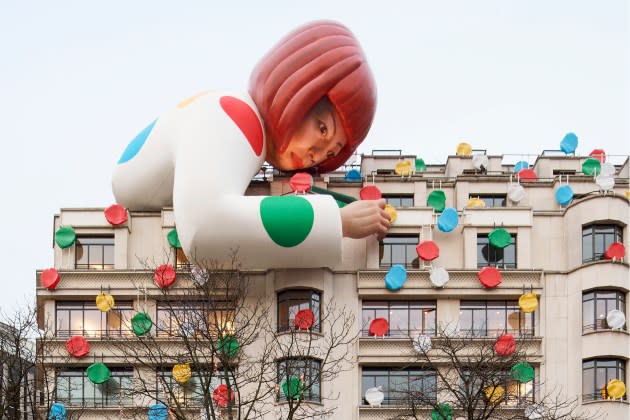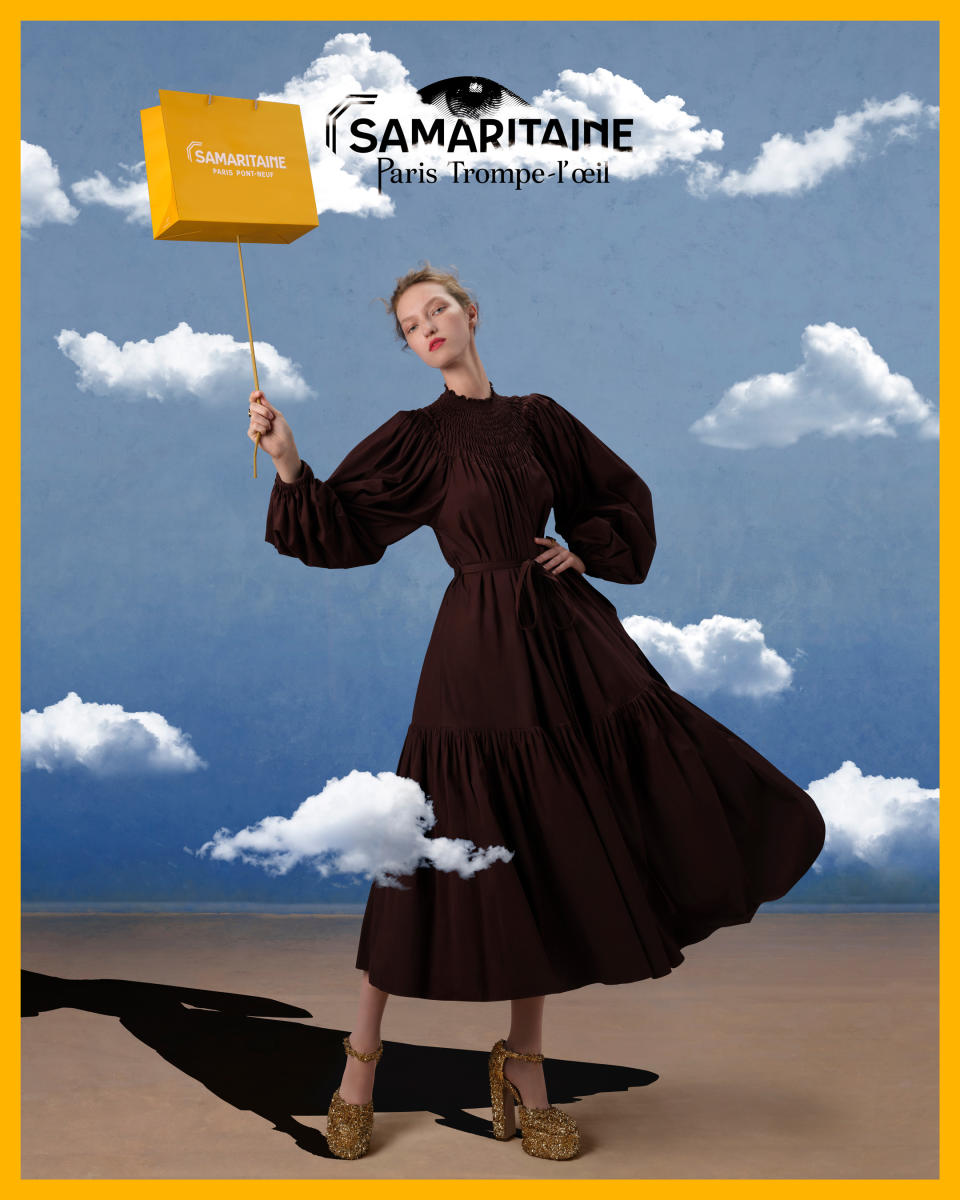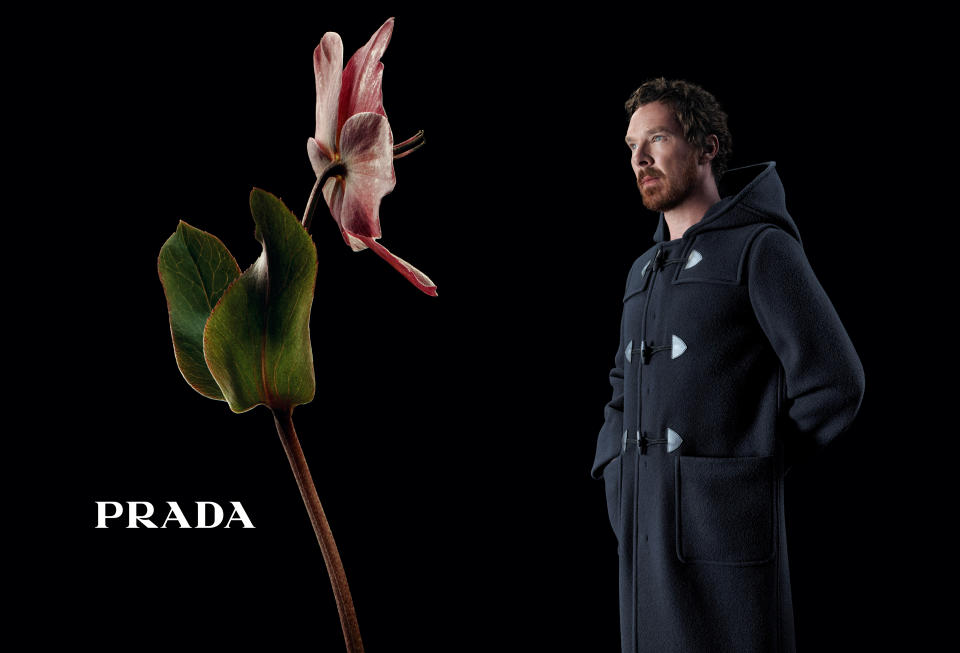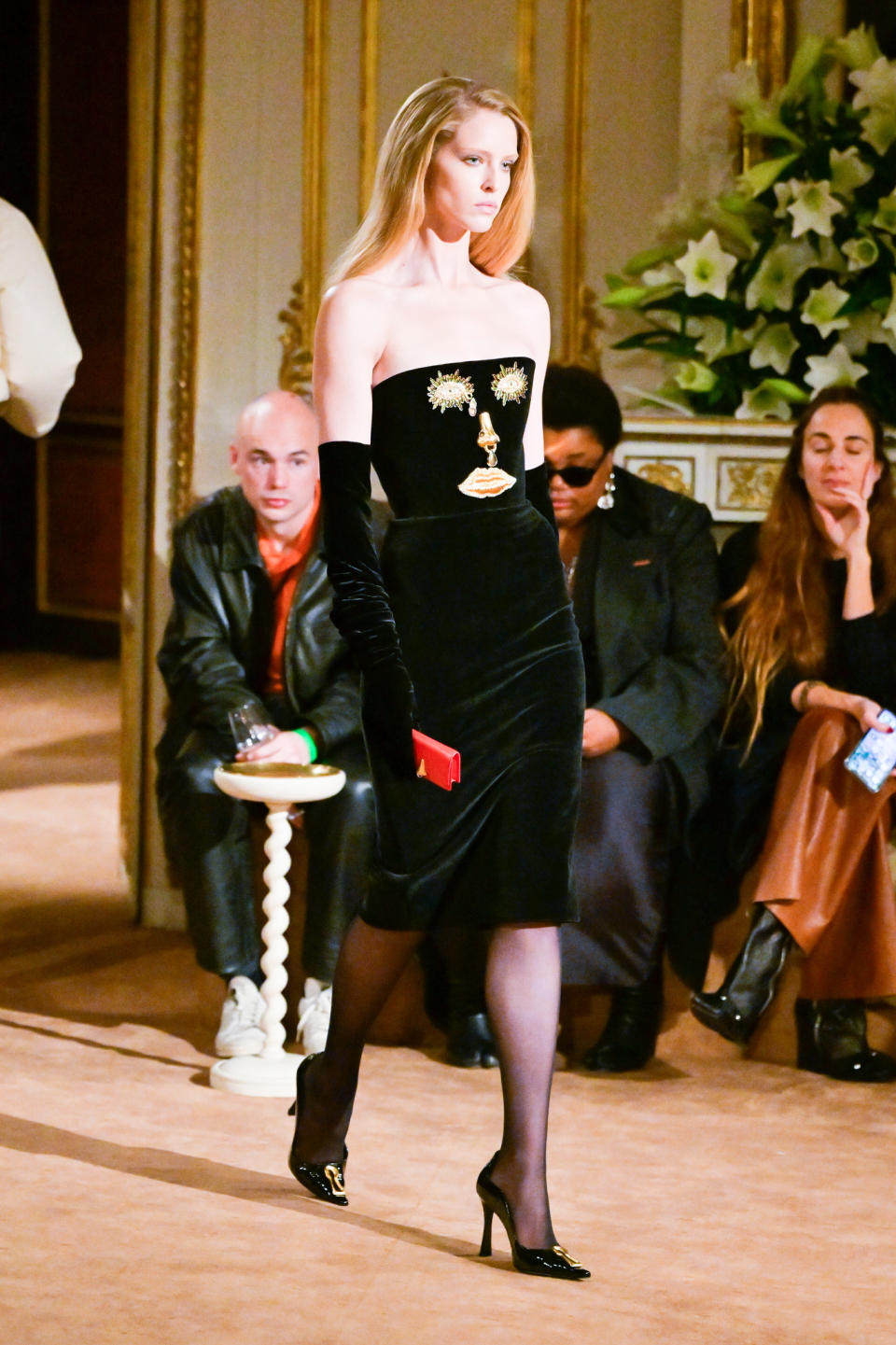What to Watch: What’s Behind Fashion’s Love Affair With Surrealism?

PARIS — It’s the season of Surrealism.
From the golden anatomical details at Schiaparelli to Loewe’s blurry prints of antique dresses, fashion is embracing poetic and unexpected visual effects amid a resurgence in interest for the cultural movement that revolutionized art with its dreamlike and subversive images fueled by the subconscious mind.
More from WWD
The trend is due to gather steam in 2024, which marks the centenary of the publication of poet André Breton’s “Manifesto of Surrealism,” with store displays and magazine pages filling up with eye-catching installations and reality-bending imagery.
At Paris department store La Samaritaine, visitors will be able to peek through bull’s-eye lenses to discover AI-powered images that recast the historic building in an unexpected light, as part of the “Samaritaine Paris Trompe-l’oeil” exhibit, which runs Sept. 6 to Nov. 1.
The event also includes a photo call area, dubbed “Le boudoir surréaliste,” and a pop-up space featuring a selection of antiques from the famed Puces de Clignancourt flea market, endorsed by fashion editor Carine Roitfeld, who will launch her first home fragrance at the space.

The items on sale will be curated by Aurélien Jeauneau and Jérémy Pradier of Galerie Pradier-Jeauneau, and Jean-Marc Hervier of JMH Decoration, who recently helped Roitfeld decorate her new apartment with furniture by designers including Willy Rizzo.
Roitfeld revealed she collects jewelry designed by Salvador Dalí, and also owns a piece based on French artist César’s sculpture of a thumb. “I bought a lot of Surrealist jewelry because I thought it was funny,” she said. “I’ve always loved irreverence.”
Her interest in the movement was rekindled recently by watching the Netflix series “Transatlantic,” which tells the story of the Surrealist artists who fled to the U.S. during World War II. Roitfeld was fascinated by the romance between Max Ernst and art patron Peggy Guggenheim, who appears in a dinner scene wearing a crown trimmed with forks.
“It’s going to be one of the covers of the next edition of my magazine,” she said, referring to the upcoming fall issue of CR Fashion Book. “The theme is icons, and I chose Peggy Guggenheim as one of the icons.”
Luxury consultant Eric Briones, author of “Luxury and Digital: The New Frontiers of Luxury,” said Surrealism can help brands to affirm their cultural currency and make a mark, at a time when the trend for quiet luxury is erasing ostentatious logos.
“The advantage of Surrealism is that it breaks through quiet luxury’s sea of sameness,” he said. “It contributes toward brand elevation because it allows you to make a splash, so it differentiates the brand.”

The trend also acts as an antidote to the constant turmoil weighing on consumer sentiment, Briones said. “We’re in a world in permanent crisis, and luxury today is helping to protect our capacity to dream,” he opined.
He cited the example of the giant inflatable sculptures of Yayoi Kusama, which Louis Vuitton installed in locations including Paris, London and Tokyo to promote its collaboration with the Japanese artist.
Prada’s window displays feature mannequins dwarfed by outsize flowers, in an echo of its fall ad campaign featuring Benedict Cumberbatch. Meanwhile, Loewe’s fall 2023 pre-collection campaign had faces including Murray Bartlett, Aubrey Plaza and South Korean artist Koo Jeong A posing in front of blown-up photographs of fruit and vegetables.
“It’s poetic escapism,” Briones said. “And beyond that, Surrealism is about armchair traveling. It even has an environmental upside.”
Since the creation of Surrealist images does not require long-distance travel or large budgets, even smaller brands can participate in the trend. “It’s a means of communication that does not necessarily privilege the larger brands,” he noted.

A case in point is French label Jacquemus, which has captured the public imagination with viral videos featuring augmented reality animations including giant lemons and a boat shaped like a ballet shoe. Its short clip of cars shaped like its Bambino handbag whizzing though the streets of Paris has garnered more than 2 million likes on Instagram.
The video was the work of 3D artist Ian Padgham, whose Instagram bio defines him as a “Californian in France making poetically surreal videos.” They feature buildings sprouting giant mascara wands or legs in high heels, or streets and highways populated with oversize bees, snails and fish.
Ilian Gazut, another creator of computer-generated art, has gone one step further by inventing a character called Zlu, a blue-skinned giant who often appears alongside actual footage of architectural landmarks. IMG Models revealed this week it had signed the self-described “alien influencer,” who has worked with brands including Karl Lagerfeld, Swarovski and Fila.
Gazut said the videos that perform best are the ones that contain an element of surprise and play with scale.
“Everything is becoming gamified,” he said. “These types of videos are more successful than traditional videos, without necessarily requiring more means. It’s a sign of the times: fast, impactful video content is the right recipe, in my opinion, always with this idea of bringing an element of fantasy and poetry to real life.”
Gazut sees generative AI merely as one more element in his toolbox, saying the key is to have good ideas. “I couldn’t do what I do with AI,” he added, saying the technology is not yet able to create fully fledged videos — and besides, he likes the contrast between real-life footage and fiction. “If the video was fully done in 3D, it would be much less interesting.”
Creating a character is a way for him to retain a measure of creative freedom, he said, noting that brands usually like to create their own avatars in order to control the narrative.
“That’s not how I see the character,” Gazut said. “It’s a blue alien. I didn’t want to fool anyone. I wanted it to be clear that this is a virtual being and he’s not there to replace a regular model, but to propose innovative content that you couldn’t achieve with a human being, and to push back the limits.”

For museums, exhibitions on Surrealism are surefire crowdpleasers, said Alix Agret, art historian and co-curator of the “Surréalisme au féminin?” exhibition running at the Musée de Montmartre in Paris until Sept. 10.
While large museums often focus on male Surrealist artists like Dalí, the exhibit at the smaller Montmartre museum highlights the contribution of female artists, from well-known figures like Lee Miller and Leonora Carrington to those that barely left a trace.
With their radical questioning of gender stereotypes, artists like Claude Cahun strongly resonate with younger audiences, noted Agret.
“These are women who asserted themselves, and I think we need that at a time when women are fighting for recognition and for their rights,” she explained. “They are painters, illustrators, collage artists, writers and photographers, so there is a great diversity and I think people today can relate to that prolific creativity, which may also explain the current craze for Surrealism.”
Gazut said that given the speed of technology, there might come a time when viewers grow tired of the special effects that are currently keeping them in thrall. “We will simply have to reinvent ourselves and create new visuals, new concepts,” he said.
Best of WWD